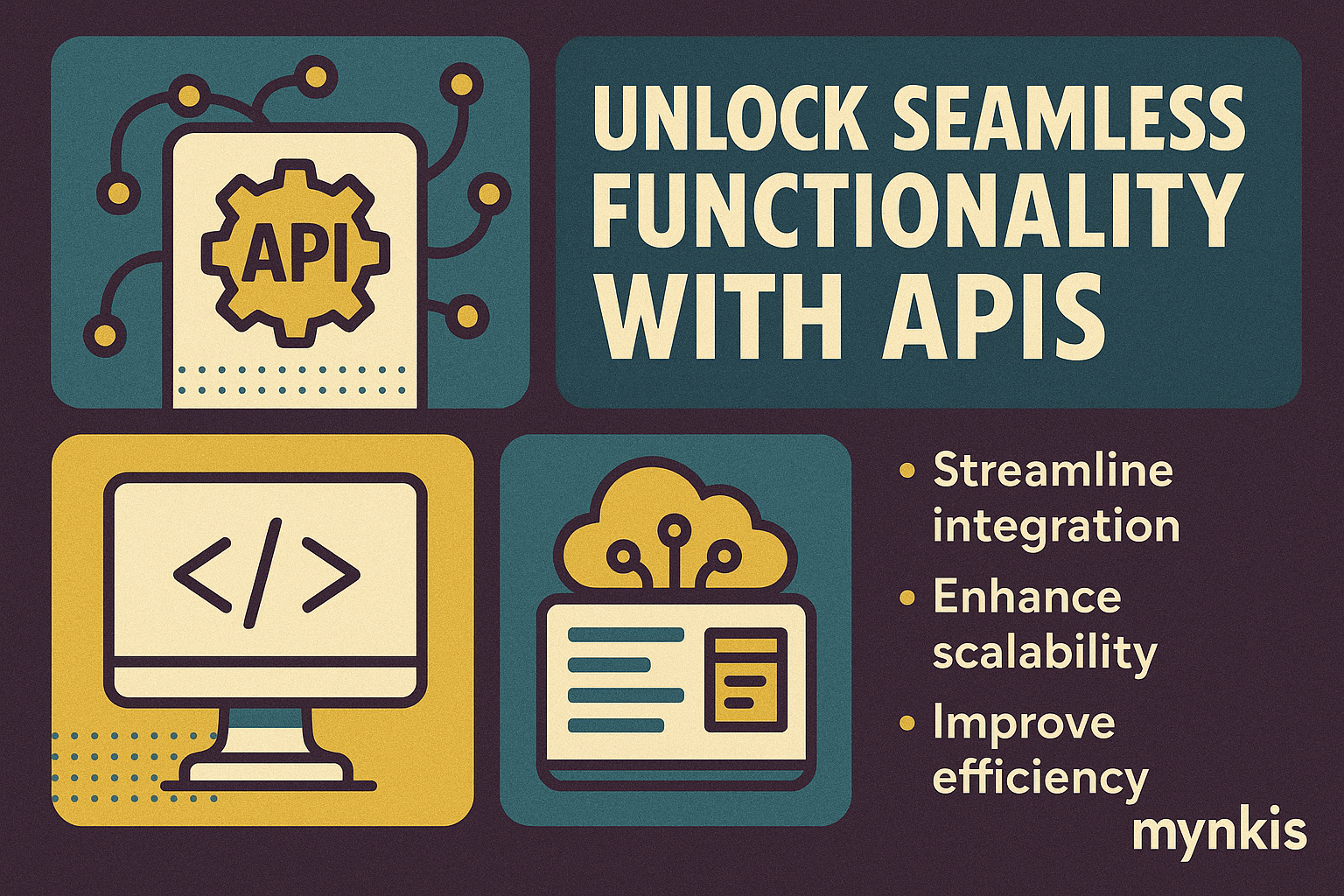Schedule a Demo
In the realm of custom software development, APIs—or Application Programming Interfaces—are your secret weapon. These powerful tools act as messengers, allowing software applications to communicate with one another effortlessly. Imagine running a medical practice where your patient management system could directly pull real-time data from your electronic health records. That's the magic of APIs—integrating vital data streams to create a seamless user experience.
For medical practices, integrating third-party APIs into your custom software builds isn't just a nice-to-have; it's a necessity. These integrations can streamline patient data management, from automating appointment scheduling to ensuring the latest medical records are at your fingertips. By leveraging APIs, you can focus more on patient care and less on administrative headaches.
A well-implemented API can drastically enhance the user experience of your practice's software. For instance, integrating with a payment gateway API could allow patients to easily settle bills right from your booking platform. In my experience working with medical offices, practices that integrated a payment API reported higher patient satisfaction rates and smoother financial workflows.
When thinking about APIs, consider industry-specific solutions that can integrate with your practice's software. Platforms like Doximity or Health Gorilla provide secure data exchange options, allowing you to connect with other healthcare providers effortlessly. Moreover, general-use APIs like those from Stripe for payments or Twilio for communications can revolutionize how your practice operates. Utilizing these APIs doesn't just save time—it elevates the overall functionality and efficiency of your systems.
Integrating APIs brings incredible benefits, but it's crucial to address security head-on. Healthcare data is sensitive, and ensuring that these APIs adhere to HIPAA standards is non-negotiable. Additionally, APIs should be securely configured to prevent unauthorized access, reducing the risk of data breaches. In my consultations with practices, the emphasis on security never comes secondary to functionality—it's always a dual priority.
Data management is a critical component for any medical practice. APIs can revolutionize how your data flows between different systems. Integrating an API like FHIR (Fast Healthcare Interoperability Resources) can unify patient data from various sources, providing a comprehensive view for better decision-making. This integration ensures that every piece of relevant data is pulled into your custom software efficiently and accurately.
Integrating third-party APIs into your software might sound complex, but it's quite straightforward with the right approach. Start by identifying the functionalities you need, then select suitable APIs that offer those features. Next, test the API for compatibility with your system. Work with a software development team that understands healthcare's unique needs to ensure smooth integration. In practice, this process, while sometimes tedious, always leads to a better product tailored to your needs.
I've seen the benefits of API integration firsthand. One practice I worked with integrated an API for online scheduling. The result? Fewer missed appointments and better resource management because patients could easily see availability and book at their convenience. Another example involved a lab results API, where real-time data integration led to faster diagnosis and treatment plans. These examples underline the transformative potential of APIs in the day-to-day operations of healthcare practices.
The future of custom software development in healthcare heavily leans on API integrations. As technology evolves, we can anticipate more sophisticated APIs designed specifically for healthcare. Think of AI-driven APIs that help predict patient outcomes or blockchain APIs that secure patient data exchanges. These innovations promise a future where practices can truly optimize their services through the power of interconnected software solutions.
Despite their benefits, integrating APIs can come with its share of challenges. Compatibility issues, data mapping, and ensuring scalability can be hurdles. Overcoming these requires a blend of technical knowledge and strategic planning. Regular updates, thorough testing, and maintaining an open line of communication with your software developers can mitigate these issues effectively. I advise practices to view these challenges not as roadblocks but as stepping stones to better integration and performance.
With a vast array of APIs available, choosing the right ones for your practice might feel daunting. Start by evaluating your specific needs. Are you looking to streamline patient communications? Enhance payment processing? Or perhaps improve data interoperability? From there, look at API providers with a proven track record in healthcare, particularly those cited positively by organizations like the American Medical Association (AMA). Prioritize those that offer robust documentation, clear support channels, and adhere to stringent security standards.
Implementing APIs successfully hinges on following best practices. First, thoroughly vet each API for compatibility and security. Regular monitoring and maintenance are essential to ensure the API remains integrated seamlessly into your system. Documentation and communication are king—maintain detailed records of your integrations and have clear lines of communication open with your development team. Lastly, be prepared for iterative improvements; even the best integrations can be refined over time to suit your evolving needs.
While the benefits of API integration are clear, it's important to consider the economic impact. Upfront costs can include developer time and subscription fees for certain APIs. However, long-term benefits often outweigh these costs by improving operational efficiencies, reducing manual work, and enhancing patient satisfaction. From a financial perspective, investments in API integration should be viewed as a pathway to increased productivity and, ultimately, higher revenue streams for your practice.
The integration of third-party APIs into your practice's software is not just a trend—it's a strategic move towards a more efficient and patient-centered healthcare system. From enhancing data management to revolutionizing patient experiences, APIs unlock levels of functionality and automation that stand to greatly benefit your practice. As you move forward, remember that while integration might present challenges, the rewards in terms of user experience and operational efficiencies are well worth the effort.
